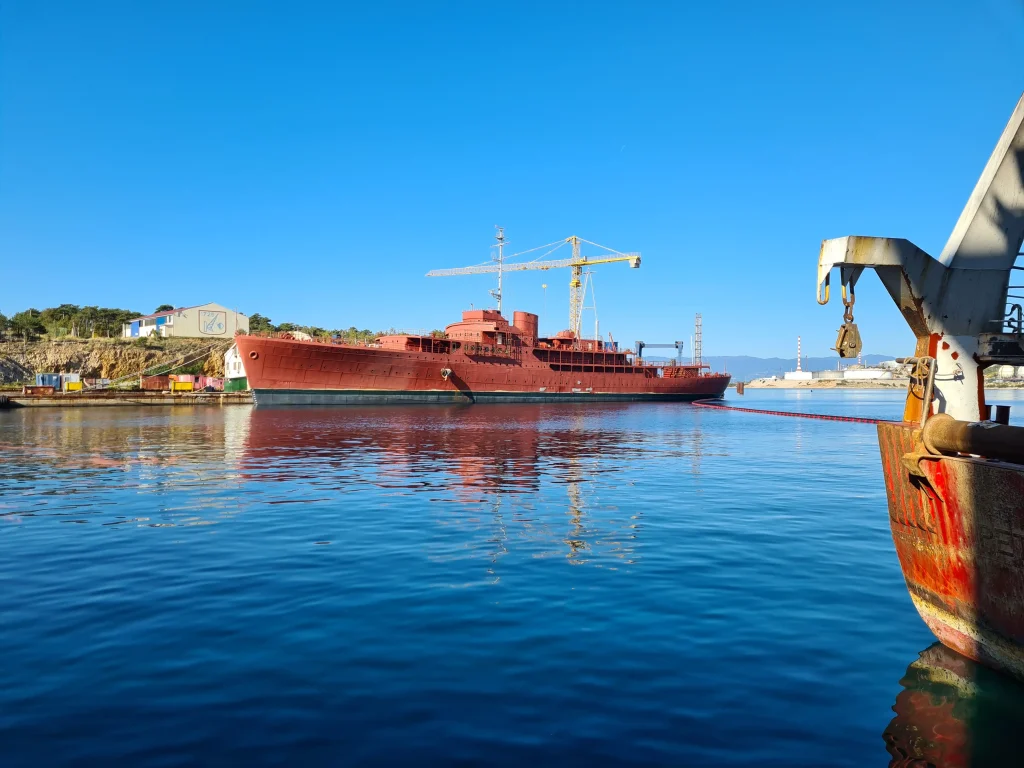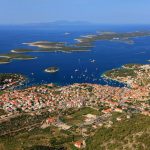The Invitation has been published on the website of the Rijeka Civic Museum, on the website of the City of Rijeka, and on the website of the Tourist Board of the City of Rijeka and concerns all those who own and wish to share items, photos, videos or simply vivid memories of the ship Ramb III, Kiebitz and Galeb with the wide audience. These are the three names under which this ship sailed during its long and rich history. The Rijeka Civic Museum collects physical memories by borrowing or permanently using them, and also intangible ones, available in the testimonies of people linked with the ship in various ways. Various items will be taken into consideration, and also human stories that can relate to any period of the ship’s life.
All interested parties can respond to the Public Invitation via the online form available on the website https://www.rijeka.hr/en/online-application-form-for-the-public-invitation-of-the-museum-of-the-city-of-rijeka/ or via email info@muzej-rijeka.hr, or by calling the phone number: +385 51 351 092
The restoration of the ship Galeb is financed with European funds as an integral part of the project “Tourist Valorisation of Notable Industrial Heritage Monuments of Rijeka”.
The ship is currently being restored at the Dalmont shipyard in Kraljevica, a small town on the north Adriatic coast. Most of the ship’s furniture has been restored and the furniture awaits its return to the original premises where it once stood. At the same time, the Rijeka Civic Museum, in cooperation with Nikolina Jelavić Mitrović, a multiple award-winning Croatian designer is preparing a permanent museum display that will show the rich and incredibly interesting European and world history of this ship.
Three names and three roles of one ship
The ship Galeb is best known to the general public as the maritime residence of former Yugoslav President Josip Broz Tito, who travelled aboard the ship around the world making visits to member countries of the Non-Aligned Movement. However, this ship has a history that goes beyond it. It was built in Italy as a transport ship, then became a warship and afterward a German minelayer. The ship was badly damaged twice but was saved both times. Galeb was Tito’s ship, and after the breakup of Yugoslavia, the ship was sold to a Greek ship-owner who wanted to turn it into a yacht but was unable to do so due to financial difficulties. This ship has found its last refuge in Rijeka, where it will become the first Croatian museum – ship. We remind you that in 2020 Rijeka was the European Capital of Culture.
Under the name of Ramb III, this ship was built and launched in 1938 at the Ansaldo shipyard in Genoa. The role of the ship was then intended for transport. The ship was to transport southern fruit to Europe and for this purpose, the construction of the ship was commissioned by the Italian company Regia Azienda Monopoli Banana (RAMB). It was the third of a total of four ships of this company.
Immediately after the launch, at the beginning of the Second World War, Ramb III was transformed into an auxiliary cruiser of the Italian Navy and carried food for Italian soldiers in Africa. During one of those voyages, in 1941 in the Libyan port of Benghazi, the ship was torpedoed on the bow by the British submarine Triumph and nearly sunk. Thanks to the ability and skills of the Italian captain and crew, the ship was nevertheless saved in such a way that from Benghazi to Sicily it travelled 900 sea miles in reverse after which it was towed for restoration works to the San Rocco shipyard, near Trieste.
After the capitulation of Italy in 1943, the ship was captured by the German Navy and turned into a minelayer by mounting minelayer rails. The Germans renamed it: Kiebitz. As a minelayer, the ship laid more than 5,000 mines in the northern Adriatic. In November 1944, in the bombing of the port of Rijeka, it was sunk by Allied planes. It spent three years on the bottom of the port, at the end of the war, in 1947, it was recovered from the seabed by the company Brodospas from Split.
The ship was then towed to the Uljanik shipyard in Pula, where it was dismantled and reassembled and completely rebuilt. Under the new name – Galeb – it was used as a training ship of the Yugoslav Navy. But the ship owes most of its fame to the fact that it was the maritime residence of former Yugoslav president Josip Broz Tito during his state travels. It thus became a symbol of the Yugoslav role in the Non-Aligned Movement. During its first trip abroad, Galeb set sail in 1953 for London. That trip was also a sign of Yugoslavia’s political turn towards the West after retreating from Stalin and the Soviet Union. After London, and Tito’s meeting with Winston Churchill, followed numerous state trips to countries in Asia and Africa with the purpose of promoting the ideas and policies of non-alignment in the world affected by the division into eastern and western blocks.
After Tito’s death, and after the breakup of Yugoslavia, in the 1990s, the ship was sold to a Greek ship-owner. He wanted to turn the ship into a yacht, however, due to financial problems, the refurbishment project never came to life. The Ministry of Culture of the Republic of Croatia declared the ship a Croatian cultural good in 2006, following this, the City of Rijeka bought it with the intention of turning it into the first Croatian ship – museum. With the accession of Croatia to the European Union, Galeb has become an integral part of the EU project “Tourist Valorisation of Notable Industrial Heritage Monuments of Rijeka”. In 2019 the ship was towed to the shipyard in Kraljevica, a small town on the north Adriatic coast, where its reconstruction is underway.
The fourth life of the ship Galeb will be a museum life. Thus, after a turbulent past, it awaits a peaceful berth in the Rijeka port and visits by numerous tourists. Through the museum display, the ship will tell the story of its rich history, and the Public Invitation sent by the Rijeka Civic Museum enables all interested parties to include part of their memories that link them with this ship in the museum display.
To read more about lifestyle in Croatia, follow TCN’s dedicated page.










